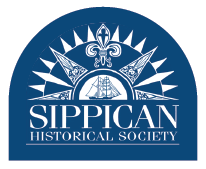
Celebrate Elizabeth Taber
The mission of Celebrate Elizabeth Taber is to inform the community about the life of Elizabeth Taber and her significant contributions to Marion.
Welcome back to Marion, Elizabeth Taber!
Marion would be a very different place if Elizabeth Taber had not blessed us with her generosity, vision, and passion for education. We can thank her for Tabor Academy, Elizabeth Taber Library, Taber Hall, Union Hall, the Congregational Chapel, the Music Hall, and many other gifts that continue to benefit the town to this day. Some have described her as “gruff,” but her actions paint a fuller picture of Marion’s extraordinary benefactor.
Elizabeth Sprague Pitcher was born in 1791 in a modest house on a small lane connecting Main and South Streets in Marion. Daughter of Theophilus and Sarah Pitcher, she had five brothers and one sister. From the start, she hungered for an education – not usually offered to girls in those days. She attended school in Marion, then became a teacher in the small one-room schoolhouse in the village.
In 1824, she married Stephen Taber and settled in New Bedford. They had three children, all of whom died before the age of five. In addition to his work as a clockmaker, Stephen successfully invested in whaling ships and railroads, and amassed considerable wealth. After his death in 1862, Elizabeth continued to invest in railroads and mills, and built a sizeable fortune.
In 1870, eight years after the death of her husband, 80-year-old Elizabeth returned to Marion, determined to use her wealth to “put some snap” back into her hometown. Wearing mourning black and occasionally smoking a pipe, Elizabeth began her plan “for the improvement and embellishment of my native place, lovely Marion, village by the sea.” Her only heir was a cousin named John Foster, who drove her every day back and forth on Marion’s dusty roads as she designed and supervised her various projects. In 1872, she bought some land and provided $4000 for a Victorian building to house a library on the first floor and a natural history museum on the second floor. Looking to the future, she also provided a $15,000 endowment for the library and $6000 for the museum. Her funds paved roads, built stone walls, and planted trees. After sea captains built the Congregational Church, she donated an organ and constructed a stone chapel across the road for a children’s Sunday School. She also donated funds to the Evergreen Cemetery and provided $20,000 for Lower Village improvements.
Passionate about the education of young girls and boys, she founded Tabor Academy in 1876. She also built a home for Tabor’s first headmaster – Taber Hall – which included two rooms upstairs for herself. Beginning in 1875, she funded and oversaw construction of the two original buildings at the corner of Spring and Main Streets. She hired Clark P. Howland as the first headmaster, and together they developed the curriculum and rules for conduct. The school opened in September 1877 with a class of 21 students. Elizabeth stipulated that Marion students should receive a free education, and specified in her will that “the character of the school itself should … be gradually elevated and its scope enlarged.” Certainly the decision in the 1930s to move the school to its present setting near the sea was in accord with her wishes for its continuing growth and improvement.
Elizabeth died in 1888 at the age of 97, and was buried alongside her husband Stephen and their three children in Acushnet. It is estimated that her fortune was close to half a million dollars, nearly all gifted to the town of Marion in buildings and railroad stock. In her will, Elizabeth left funds to build the Music Hall for lectures and concerts, as well as endowments to maintain all of her creations. Although she was a solitary person, she had many friends, and townsfolk revered her for her boundless generosity and inspired vision for Marion’s future.
To honor this extraordinary woman and all of her achievements, an independent committee of townspeople led by Judith Rosbe of the Sippican Historical Society raised funds to commission noted New Bedford sculptor, Erik Durant, to create a life-size bronze statue of Elizabeth. Two years later, in October of 2020, the Elizabeth Taber statue was formally gifted to the town of Marion in a celebratory dedication ceremony. She will now proudly sit forever on her granite bench at the edge of Bicentennial Park, looking toward two of the many buildings she gave to Marion, her beloved hometown.
< Back to main Elizabeth Taber page

Elizabeth Sprague Pitcher Taber

Taber Library, 8 Spring Street

37 Main Street

13 Cottage Street

2 Spring Street
